
- Source: THE NEW YORK TIMES STYLE MAGAZINE
- Author: THORA SIEMSEN
- Date: OCTOBER 10, 2019
- Format: DIGITAL
An Artist Who Works to Lana Del Rey and the Hum of Cable News
Jacolby Satterwhite, known for his virtual-reality installations and 3-D-printed sculptures, discusses a pair of new shows — and his daily routine.
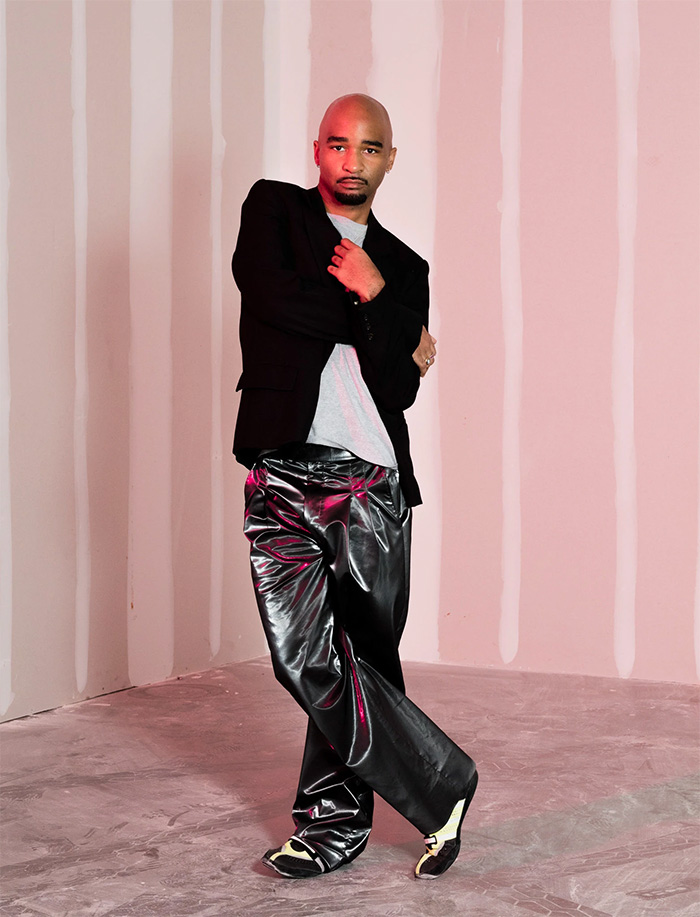
The artist Jacolby Satterwhite photographed at Pioneer Works in Red Hook, Brooklyn. Nicholas Calcott
Jacolby Satterwhite has spent the past decade making highly wrought digitally animated science-fiction worlds and irreverent modern dance pieces that draw on vogueing and martial arts. But he considers his two current shows, in New York and Philadelphia, to be “the final draft, conceptually, of what I was trying to say for years.” While Satterwhite has long been known as an art-world generalist, his fall exhibitions show him at his most direct. At Pioneer Works in Brooklyn, the exhibition “You’re at Home” brings together his digitally animated video series “Birds in Paradise” (2017-19), in which folkloric motifs and symbols of American consumerism tumble into a video-game world, and his 3D-printed objects, such as coin purses and jewelry boxes, based on drawings made by his mother, Patricia Satterwhite, before her death in 2016. Meanwhile, at the Fabric Workshop and Museum in Philadelphia, the show “Room for Living” features a group of works Satterwhite developed during his recently completed two-year residency at the museum. They include figurative sculptures inspired by virtual objects from his video series “Reifying Desire” (2011-14), in which Satterwhite’s own digitally animated avatar navigates a world where his mother’s renderings of household items are realized. The residency has been a homecoming of sorts for the artist, who obtained his M.F.A. in the city in 2010 before moving to New York, where he broke through with his virtual and live-action performances at the Studio Museum in Harlem and the 2014 Whitney Biennial.
Home is a unifying theme of Satterwhite’s twin exhibitions, and his year overall: In both New York and Philadelphia, he has continued his practice of using the prolific artistic output of his mother, who lived with schizophrenia, as raw material. At Pioneer Works, the gallery’s sole white space, a small room set off from the vast ground-floor exhibition hall, is dedicated to an installation of Patricia’s works — many of them blueprints of inventions that she sent to home shopping networks and patent offices. The room serves as a kind of legend to the show, a stark shrine of filial devotion that is absorbed elsewhere more conceptually. Satterwhite, who was born and raised in South Carolina, was also called on this year to contemplate the idea of homecoming by the musician Solange: He created a video for her slow-burning track “Sound of Rain,” from her 2019 album “When I Get Home,” that features an animated architectural colosseum populated by dancers, their bodies slowly combusting. The project was an occasion for the two collaborators, both 33 and ambitious interdisciplinary artists, to explore the similar ways in which they have been revisiting their origins.
At the Pioneer Works show, Satterwhite is also debuting an album of his own, “Love Will Find a Way Home,” which he recorded with the musician Nick Weiss (one half of the electronic duo Teengirl Fantasy) as part of their ongoing collaboration Pat, a band in which the duo create electronic dance music out of Patricia’s sincere lo-fi a cappella recordings. Featuring 14 somnolent club tracks, the album nods to the British rapper and trip-hop pioneer Tricky’s 1995 record “Maxinquaye,” itself a homage to his late mother, Maxine Quaye. The album provides not only the scores for Satterwhite’s films at Pioneer Works but also a focal point for the exhibition at large: Visitors can immerse themselves in a makeshift record store replete with stylish merchandise — the German photographer Wolfgang Tillmans shot the album’s cover art — and play Pat’s tracks in virtual-reality listening stations. On the last Sunday of September, while he was putting the finishing touches on “You’re at Home” from his apartment in Bed-Stuy, Satterwhite answered T’s artist’s questionnaire.
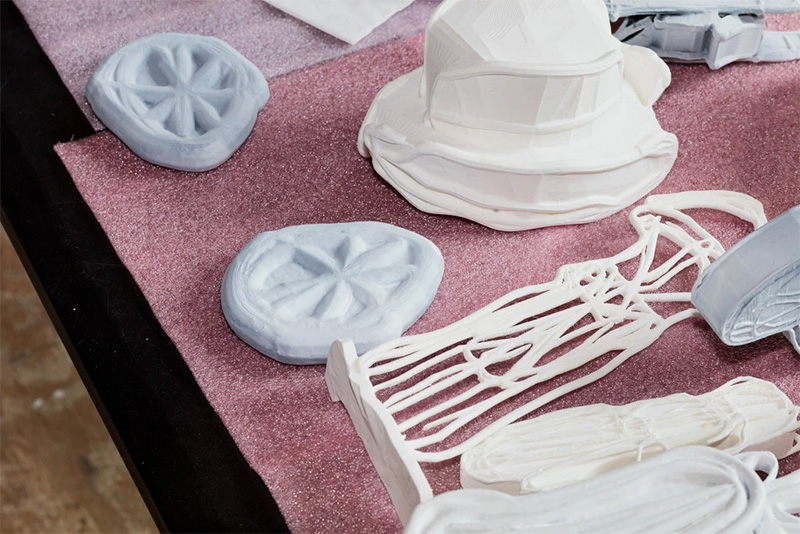
Nicholas Calcott
What is your day like? How much do you sleep, and what’s your work schedule?
I try to work from 8 in the morning to late at night, but that involves the ritual of cleaning, putting on my aromatherapy, showering, eating my muffin, coffee, letting CNN and MSNBC play ambiently and make me nervous, massaging the curiosity all day.
How many hours of creative work do you think you do in a day?
From 8-13 hours, and sometimes it involves painful staring at the screen and anxiety. But with my new CBD regimen, I’ve found a way to make it work. I smoke more than I should.
What’s the first piece of art you ever made?
A drawing in Sunday school at church. We had to interpret Jesus, and I drew Jesus the best.
What’s the worst studio you ever had?
I was in this residency in New York and it was affected by Hurricane Sandy. They had no heat on that floor, and it was super cold. I would work with my mittens on all day. I was preparing for the Whitney Biennial at the time, and I couldn’t leave the studio because I needed my piece to be the strongest thing you’ve ever seen.
What’s the first work you ever sold? For how much?
I did a painting of W.E.B. Du Bois and sold it to the W.E.B. Du Bois High School in Maryland when I was 19. It was like $400.
When did you first feel comfortable saying you’re a professional artist?
Probably when I was 25 or 26. When I got my first gallery, my first solo show. When I first started working with the Studio Museum in Harlem and started seeing my name in books.
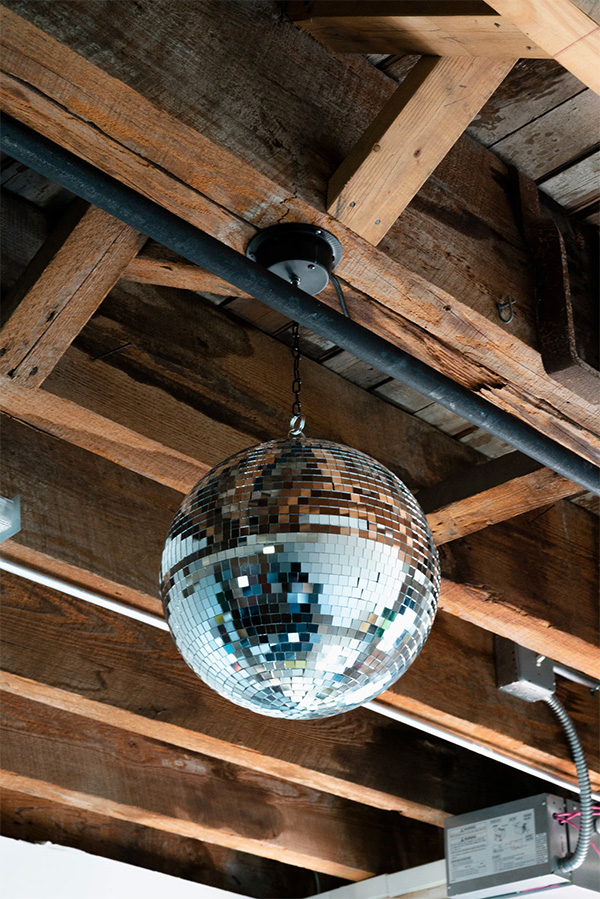
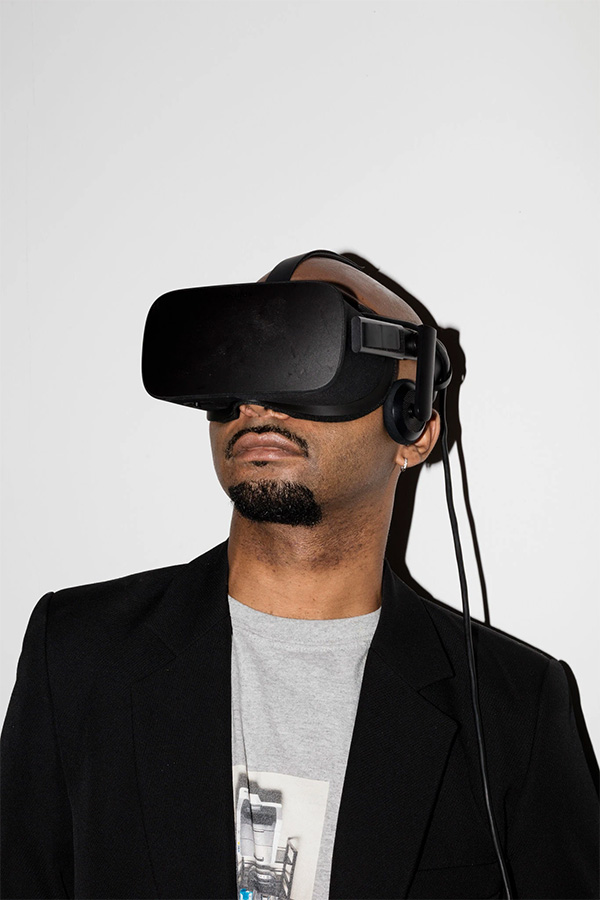
Nicholas Calcott
When you start a new piece, where do you begin?
I generate animation and images around an idea until it begins to metastasize. I’ve been saying over and over again that curiosity is an infection and you have to kind of massage it until you lance the boil. That’s the way I work. I become curious about five or six things and I massage those five or six things conceptually, through images, 3-D modulations, architectural rendering plans, pulling from my mother’s drawings, her sound recordings, performances from people who I’m connected to. It becomes a harmonious form at some point.
How do you know when you’re done?
It’s so cheesy, but I just know. Usually I’m done when I know the deadline’s near and I’m like, “O.K., here.”
How many assistants do you have?
At the moment, I don’t have any. I had assistants for the Fabric Museum show that were in-house. I do everything digital on my own, whether it’s virtual reality or 3-D animation or architectural renderings. When it comes to facilitating physical things or if I need things fabricated that are sculpturally intense, I’ll work with the people they have in-house at the institution for the installation. I’m kind of a one-man show.
Have you assisted other artists before? If so, who?
Yes, Kalup Linzy, but we were friends. I helped him make an animation once. It was my first animation. He’s awesome. We were attached at the hip for a couple years. I started doing residencies all the time and lost touch with everyone.
What music do you play when you’re making art?
I’m playing a lot of Ariel Pink, Connan Mockasin, Kindness, Solange, of course, Robyn and Lana Del Rey’s new “Norman _______ Rockwell!” album.
Is there a meal you eat on repeat when you’re working?
I love eating salmon salads from my bodega, they’re so good. They make me feel like I’ve got another wind of energy.
Are you bingeing on any shows right now?
I’m trying to watch “Succession,” but it’s really hard. All my friends think it’s really amazing, and I’m still on the third episode. I’m also watching “Explained” on Netflix. I love documentaries about very ordinary things.
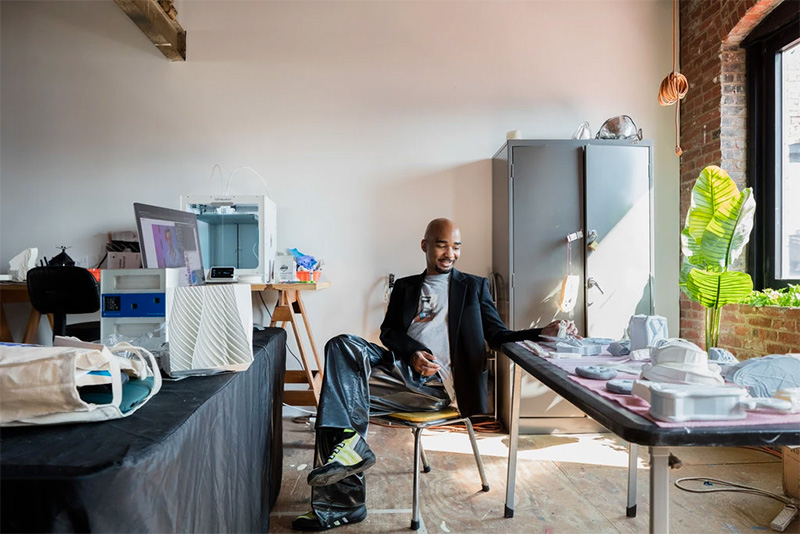
Nicholas Calcott
What are you reading?
I’m reading animation books and also Kai Althoff’s “And Then Leave Me to the Common Swifts.”
How often do you talk to other artists?
I feel like all my friends are writers and fashion people or art historians. I have artist friends who I grew up with, and keep up with, but I’m kind of annoyed that I don’t really have a community anymore. It’s strange. I’ve been thinking about it. I don’t know how to navigate some things, because I don’t have anyone to bounce things off.
What do you do when you’re procrastinating?
I watch “The View” or YouTube.
What’s the last thing that made you cry?
A man.
What embarrasses you?
Being lied to.
What do you usually wear when you work?
Athleisure from my friend David Casavant, he makes clothes. He styles everything I do.
What do you bulk buy with most frequency?
Essential oils and Lypo-Spheric vitamins. They’re gel vitamins that are nano-size and can fit into every single one of your blood cells. It’s a replacement for getting a B-12 shot. You get these B-12 packets that you drink and it tastes disgusting. You put it in your water and you gulp it and it makes you feel better. Essential oils because I stay in my studio for 13 hours a day and I need to feel like my anxiety is tempered. I also buy weed and CBD in bulk. I am a hippie old lady.
This interview has been condensed and edited.

